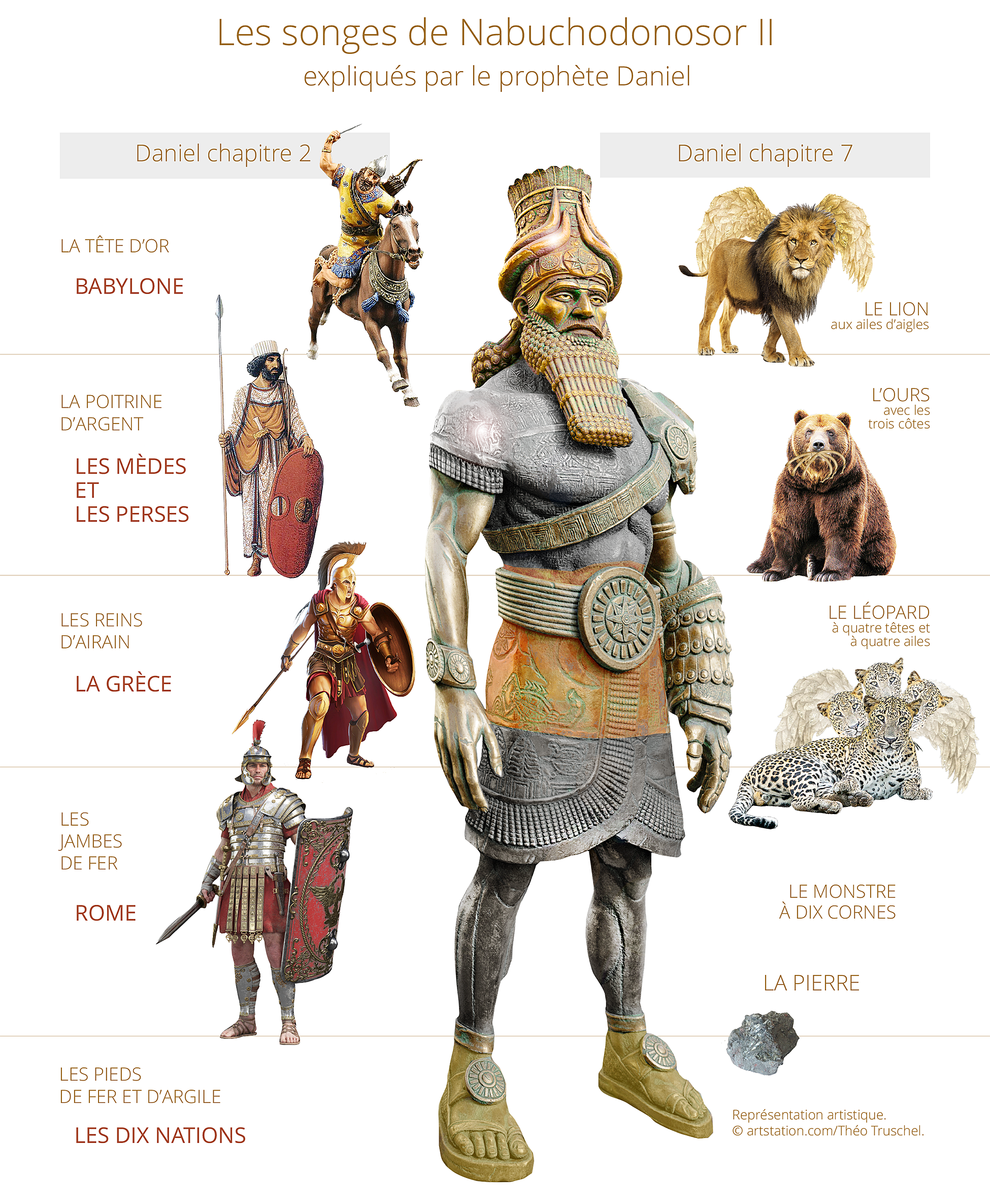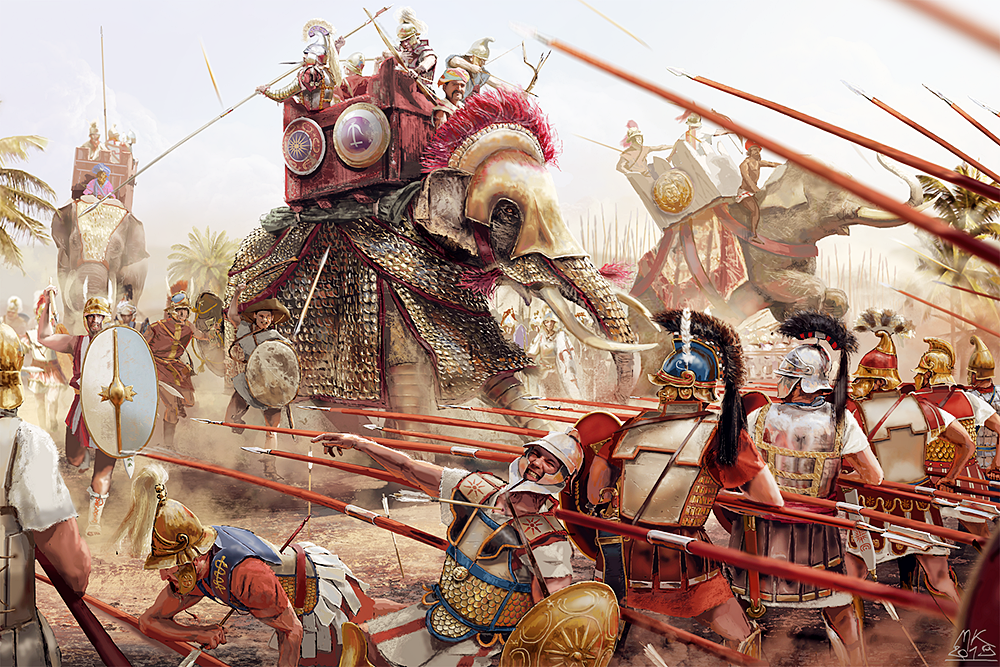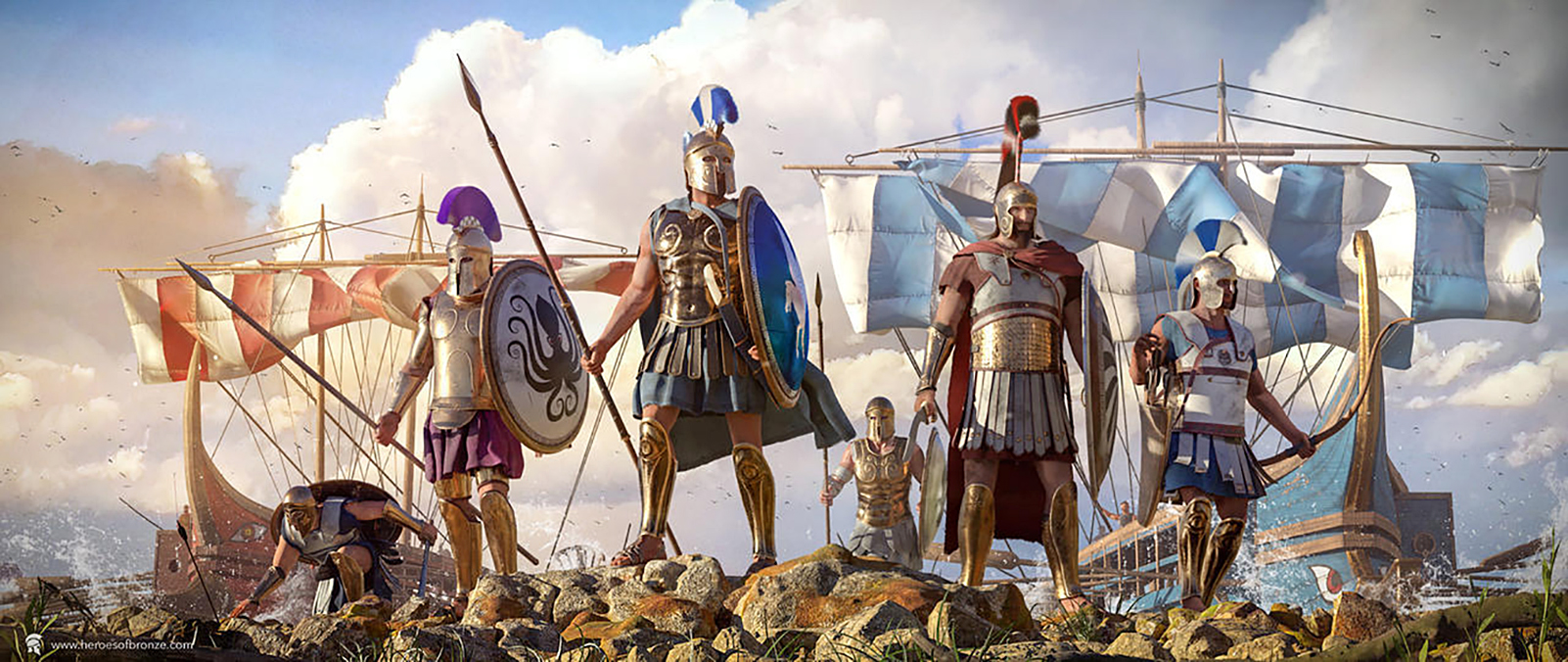
Bible, History, Archaeology
Bible,
History,
Archaeology
The dreams of Nebuchadnezzar II
the Nebuchadnezzar of the Bible
Contents:
Dreams explained by the prophet Daniel
In chapter 2 of Daniel, Nebuchadnezzar II sees in a dream a huge statue made of various metals and clay. These materials have a decreasing value from the head to the feet. It is Daniel who reveals to the king the course of history, which spans the period of Antiquity:
– Babylon, absolute authority characterizes this regime, where the king is a sacred person; Scripture likens it to tyranny (Isaiah 14,4).
– The authority of the Medes and Persians is less, moving from the dictatorship of a single man to an oligarchic system, a government of families. Written law even prevails over the will of a king (Daniel 6,8-9).
– The Greco-Macedonian Empire, the third political power, corresponds to the bronze thighs of the statue; it is a military regime.
– Then the Roman Empire, The fourth is imperial and dictatorial. This stage of the story corresponds to the statue's iron legs, followed by the feet, which are partly iron and partly clay. It's a curious alloy, the end result of which will be the crumbling and shattering by a stone (verse 34). We'll need chapter 7 to grasp the significance of these ten toes, which correspond to ten nations.
 Image opposite: artistic illustration of a battle between the Diadochi for the succession to the Empire after the death of Alexander the Great. © DR.
Image opposite: artistic illustration of a battle between the Diadochi for the succession to the Empire after the death of Alexander the Great. © DR.
In chapter 7, The four large animals represent four kings, or the four kingdoms or empires of antiquity:
– The eagle-winged lion symbolizes Babylon: archaeologists have found this emblem on the city gates.
– The bear swallowing three ribs refers to the empire of the Medes and Persians, whose military conquests were directed towards the South, the West and the North (Babylon, Egypt and Asia Minor).
– The leopard with four wings and four heads prefigures the dazzling conquests of Alexander the Great, and the role of his four generals (the Diadochos, Greek for diadochos meaning heir, successor) who shared his Empire after Alexander's sudden death in 323 BC.
– As for the fourth animal, The rigors of Rome's yoke are evoked by its iron teeth, in parallel with the statue's iron legs. The ten toes of the statue and the ten horns of the monster (Daniel 12,42 ; 7,7).


 Image opposite: artistic illustration of a battle between the Diadochi for the succession to the Empire after the death of Alexander the Great. © DR.
Image opposite: artistic illustration of a battle between the Diadochi for the succession to the Empire after the death of Alexander the Great. © DR.